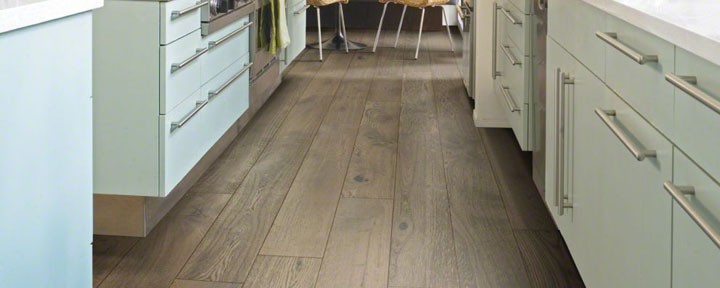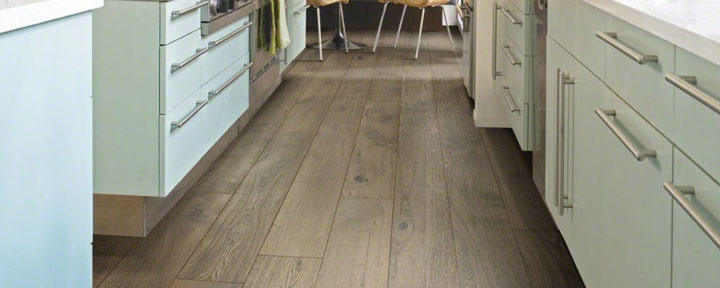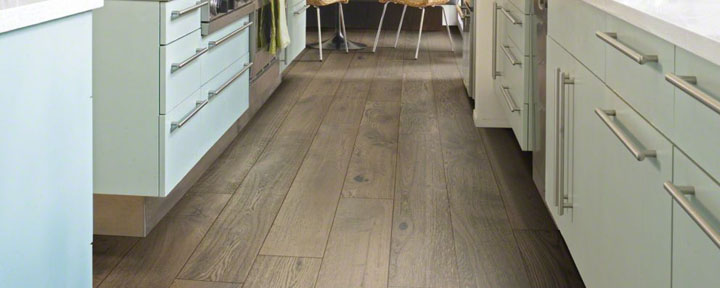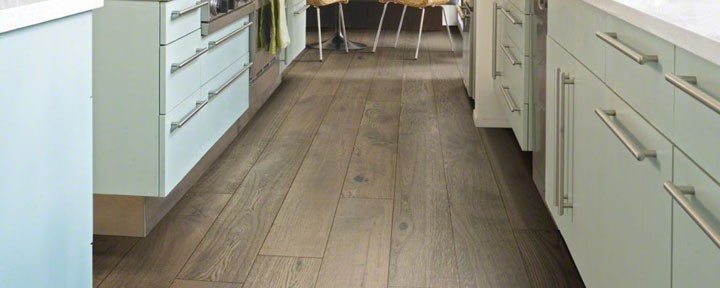
Which type of hardwood is right for your home? For a versatile and natural look that never goes out of style, many homeowners choose to install hardwood flooring. Unlike other flooring trends that come and go, hardwood flooring has remained in style for over 200 years with no signs that tastes will change anytime soon. Today, homeowners have more hardwood options to choose from than ever before. With designs ranging from rustic to retro to contemporary, there is a style of hardwood floors to fit any home.
Although there are countless wood finishes, hardwood planks can be divided into two main categories: solid and engineered. Solid hardwood is made from pure, solid wood planks. This method of constructing hardwood floors is the original way hardwood has been installed in homes for hundreds of years. The main advantage of solid hardwood flooring is the fact that it can be repaired multiple times. Scratches, discoloration or other signs of wear and tear can disappear through a sanding and refinishing process. This increases the lifespan of your flooring dramatically.
The other way of manufacturing planks is called engineered hardwood. Engineered hardwood is made from pressed plywood that uses a thin wood veneer as the top layer. The biggest difference between the two categories is stability which results in the ability to get wider and longer board planks which is all the rage right now. Because it is made from bonded layers of wood engineered hardwood is much more resistant to moisture changes in the air. Basically this means it won’t contract and expand as much as traditional hardwood and therefor the individual planks can be made wider and longer. Engineered hardwood can’t be refinished as frequently if damaged but you can replace damaged boards.
If you are trying to decide whether to install solid hardwood or engineered, you’ll want to survey and inspect the room where you are considering new floors. It’s important to note that hardwood is susceptible to moisture and extreme temperatures. These elements can cause the wood to splinter or bend, especially if you select solid hardwood. Excessive amounts of foot traffic can cause wear and tear to the planks. Scuffed and scratched floors can be refinished, but this process can get costly. Both types of hardwood flooring tend to be a bit noisy. If you choose to install hardwood in a central room, you may want to invest in rugs or pieces of furniture that absorb sound to keep movement muffled.
The popularity of hardwood flooring means that there are a countless number of styles and designs on the market today. Investigate the wide variety of lumber types, colors, finishes and plank sizes before making a selection. If you are planning on going green, there are even environmentally friendly options available that are made from sustainable wood sources. The possibilities are endless! Choosing the right hardwood for your home is a big decision. The right hardwood style can subtly tie all the other elements of your room décor together. Select carefully; a great hardwood floor can last a lifetime and beyond.







